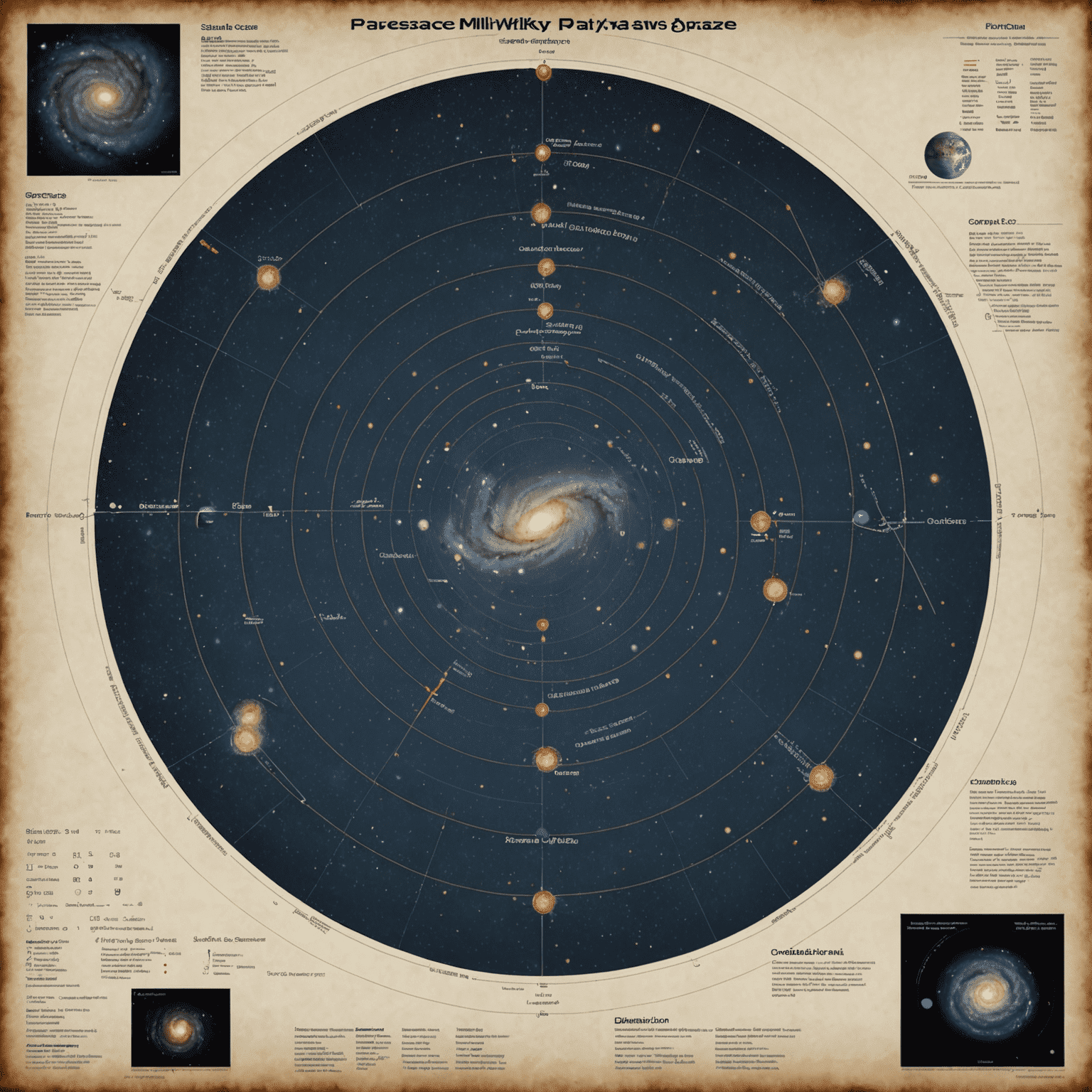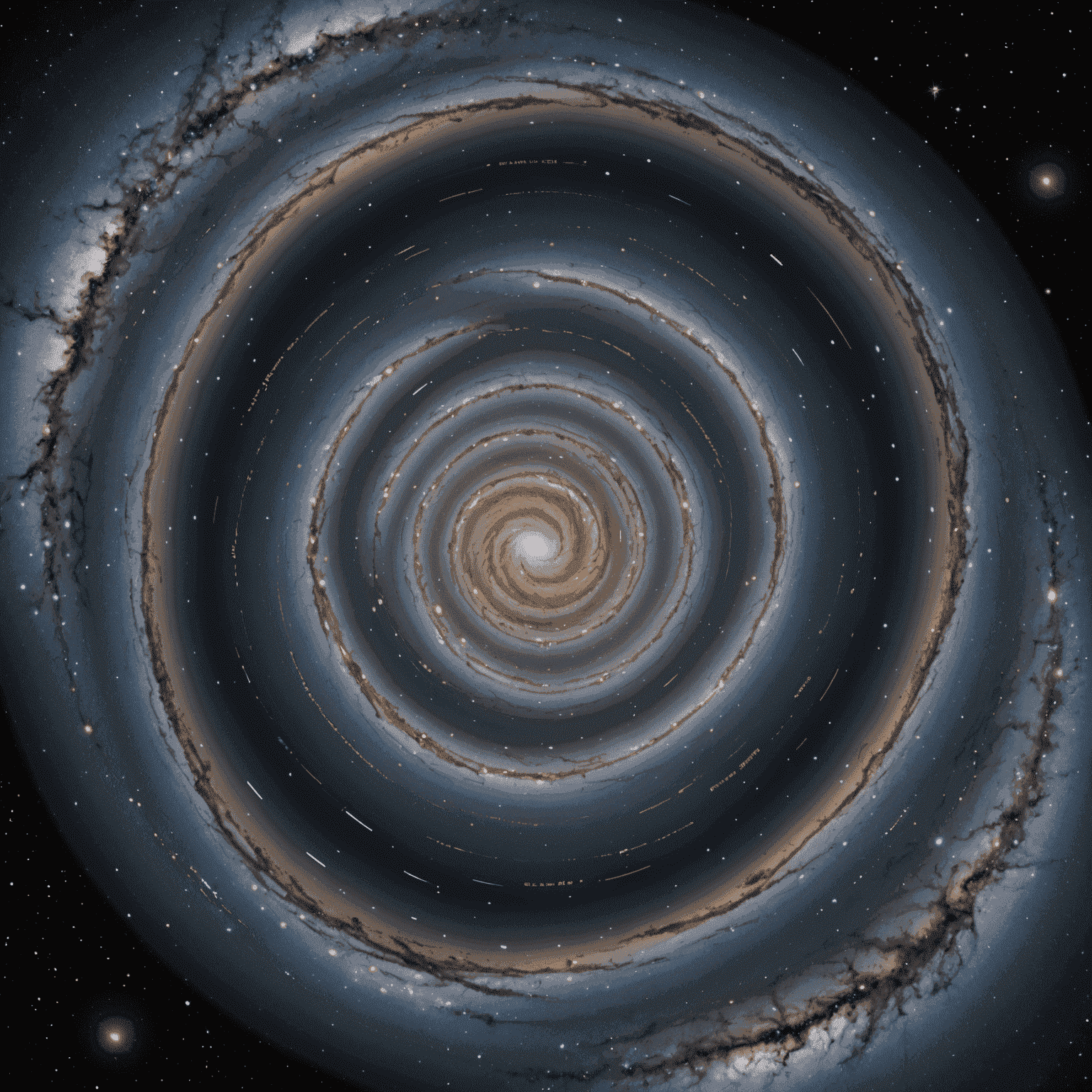Mapping the Milky Way: Parsecs in Galactic Cartography

In the grand tapestry of the cosmos, our Milky Way galaxy stands as a celestial marvel, its vastness challenging human comprehension. Yet, armed with the parsec as their measuring tool, astronomers have embarked on an ambitious journey to map our galactic home with unprecedented precision.
The Parsec: A Cosmic Ruler
At the heart of galactic cartography lies the parsec, a unit of distance that allows astronomers to navigate the immense scales of our galaxy. One parsec, equivalent to about 3.26 light-years or 30.9 trillion kilometers, provides a manageable scale for cosmic distances that would otherwise be expressed in unwieldy numbers.
Charting the Spiral Arms
The Milky Way's iconic spiral structure, with its majestic arms sweeping through space, is mapped using parsecs. Astronomers measure the distances to key features such as star-forming regions, dense gas clouds, and bright stellar associations. These measurements, often spanning thousands of parsecs, help delineate the galaxy's grand design.
Did You Know?
The center of the Milky Way, marked by a supermassive black hole known as Sagittarius A*, is approximately 8,000 parsecs from Earth.
Mapping Stellar Neighborhoods
On a smaller scale, parsecs are invaluable for mapping our local galactic neighborhood. Nearby stars, within a few hundred parsecs of our solar system, are precisely located. This detailed mapping has revealed the intricate structure of our cosmic vicinity, including stellar clusters, gas clouds, and the Local Bubble—a vast, low-density region surrounding our Sun.
The Role of Advanced Technology
Modern galactic cartography relies heavily on cutting-edge technology. Space-based telescopes like Gaia have revolutionized our ability to measure stellar distances with unprecedented accuracy. By precisely determining the positions and motions of billions of stars, these missions allow astronomers to create three-dimensional maps of the Milky Way spanning tens of thousands of parsecs.

Unveiling Galactic Structure
As astronomers compile distance measurements in parsecs, a comprehensive picture of the Milky Way's structure emerges. These maps reveal:
- The distribution of different types of stars throughout the galaxy
- The locations and extents of star-forming regions
- The shape and dynamics of the galactic disk and halo
- The presence of galactic streams and satellite galaxies
Challenges and Future Prospects
Despite significant advances, mapping the entirety of the Milky Way remains a formidable challenge. Interstellar dust obscures large portions of the galaxy, particularly towards its center. However, new techniques using infrared and radio observations are helping to pierce these cosmic veils, promising even more detailed maps in parsecs in the future.
Looking Ahead
Future missions and technological advancements promise to extend our mapping capabilities to the far reaches of the Milky Way and beyond, potentially charting distances of hundreds of thousands of parsecs with increasing precision.
As we continue to refine our galactic maps using parsecs, we not only chart the physical structure of our cosmic home but also unravel the story of its formation and evolution. Each measurement brings us closer to understanding our place in this vast, star-studded realm, reminding us of the awe-inspiring scale and beauty of the universe we inhabit.